Early Years (1700s)
The Santa Barbara Mission was dedicated on December 4, 1786, the feast day of Saint Barbara, after whom the city and Mission were named. Interestingly enough, Saint Barbara is the patron saint of masons and stone cutters. The first Freemason in recorded history to visit the Santa Barbara area was English botanist Sir Joseph Banks in 1793. He was on a voyage with British Naval Captain George Vancouver as part of his exploration of the Pacific. This was the same year George Washington laid the cornerstone of the US capital building in a Masonic Ceremony.
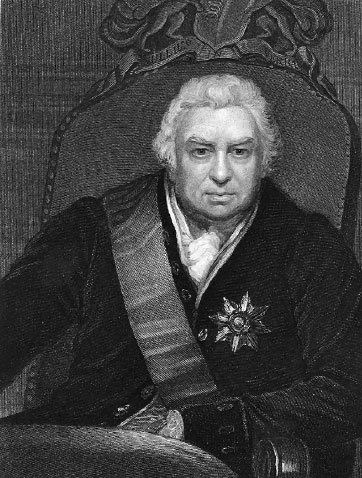
Bro. Banks noted he found the small town of Santa Barbara to be more civilized and beautiful than any other of the Spanish coastal settlements he had visited. He remarked that most of the ceramic tableware used by those living at the Presidio and Mission were made in England.
1800 – 1850
In 1846 war was declared between the United States and Mexico. On July 7 of that year, Masonic Brother, Commodore John D. Sloat, Commander-in-chief of the United States naval forces in the Pacific Ocean, came ashore at the Presidio of Monterey and raised the flag of the United States over California.
On August 4-5, Commodore Robert Field Stockton, commander of American forces in California, anchored at Santa Barbara and captured the town leaving a small garrison in charge. Commodore Stockton’s grandfather, Richard Stockton, was a Freemason who signed the Declaration of Independence.
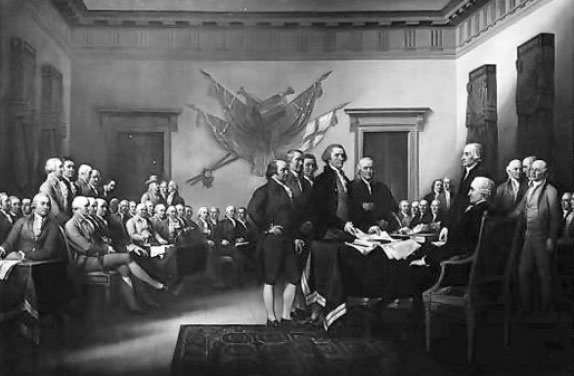
After Commodore Stockson’s departure his garrison was captured by Mexican forces on October 2nd. On December 27th, Major John C. Fremont lead American reinforcements over Gaviota pass to Santa Barbara and recaptured the town. The American flag was first raised in Santa Barbara that day.
Commodore Stockton was instrumental in taking California from Mexico at The Battle of Rio San Gabriel and The Battle of La Mesa. He served as the first military governor of California and later became a Senator of New Jersey like his father and grandfather before him.
On January 24, 1849 bro. James W. Marshall discovered gold in a stream at Sutter’s Mill on the South Fork of the American River in the foothills of Central California. By May 12, word of the find had spread and residents of the small town of San Francisco began to desert their homes to stake claims for gold. During his annual message to Congress on December 5, President Bro. James Polk announced that gold had been discovered in California, touching off the Gold Rush of 1849.
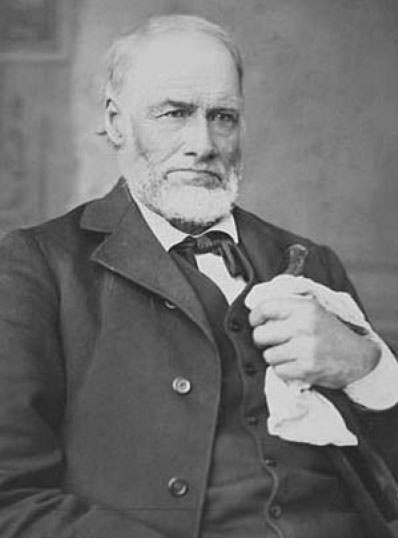
As a result of the 1849 Gold Rush, California’s American population swelled enabling it to bypass territorial status and become the 31st state of the Union in September of 1850. Five months earlier, on April 19, 1850, the Most Worshipful Grand Lodge, Free and Accepted Masons of the State of California was formed. On April 9th, Santa Barbara had begun its official legal existence as an American City.
The first Masonic Corner Stone ceremony in California was held in September 1848, before the state’s admission into the Union, to dedicate the county courthouse of Sacramento County. It served as the capital until Governor John G. Downey, a Freemason, commissioned the present capital building.
1850 – 1900
On May 15 1861, the Grand Master of the Grand Lodge of California laid the corner stone for the new State Capitol building at Sacramento.
Santa Barbara’s agricultural growth continued as it avoided the “gold fever” of 1849 that attracted thousands of easterners to California in search of riches. As was true of the rest of Southern California, Santa Barbara had largely depended upon the cattle industry for its wealth. Like Los Angeles and San Diego, it was made prosperous during the gold rush days by the high demand for cattle.
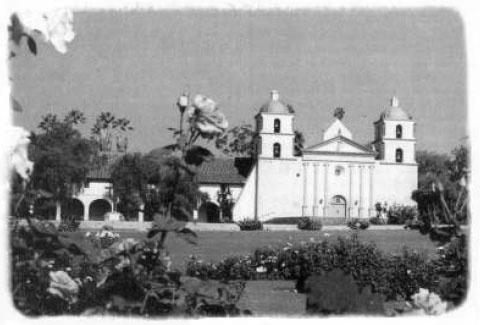
By the 1860s however, cattle prices dropped and the area was affected by a great drought. Pedro C. Carrillo, a ranchero in Santa Barbara in 1861, wrote to Don Abel Stearns of Los Angeles Lodge No. 42: “Everybody in this Town is broke, not a dollar to be seen, God bless everyone if things do not change. Cattle can be bought at any price; real estate is not worth anything.”
“The Chapules (locusts) have taken possession of the Town, they have eaten all the barley, wheat, etc., there is not a thing left by them they cleaned me of everything, and I expect if I do not move out of this town soon, they will eat me also. Damn the Chapules! I have lost about two thousand dollars.”
The drought of 1863-1864 also resulted in the closure of many area cattle ranches. With the completion of the transcontinental railroad to San Francisco in 1869 Santa Barbara became easier to reach and things turned around as the tourist business began to arrive by overland stagecoach.
The lodge had its preliminary existence on March, 28, 1868 in the office of brother J.F. Williams, on the northeast corner of State and Haley streets. The first official Masonic meeting ever held in this city was of Santa Barbara Lodge U. D. on July 10, 1868, under the dispensation issued by Worshipful Master William A. Davis, Grand Master and under the sponsorship of Los Angeles Lodge No. 42. The Charter was issued on October 22, 1868, under the direction of Samuel Prager, Past Master of Los Angeles Lodge acting as Grand Master; thus becoming the 192nd Californian lodge.
Joseph Rich became the first Worshipful Master of the first Masonic Lodge of the Channel Counties. He was appointed to act as leader during the preliminary meetings, acted as Master under dispensation, acted as master under the charter before the first election and was elected as Master three years in a row.
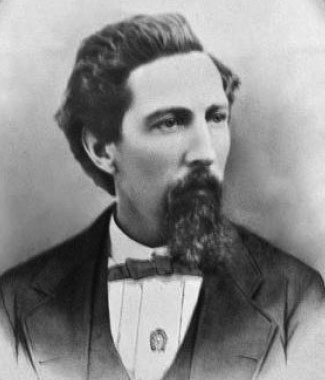
The other first officers were Stephen Olmstead, Senior Warden; Edmond Pew, Junior Warden; Edgar Van Valkenburg, Treasurer; John Stearns, Secretary; A. C. Wilson, Senior Deacon; Andrew Horn, Junior Deacon; Hiram Linville, Tiler.
The first twenty years were spent in a building at the corner of State and Haley, making use of the Odd Fellows Hall.
John Stearns was quite a resourceful businessman. Unhappy with Santa Barbara’s lack of a deepwater pier, Stearns secured the financial backing to build his own wharf. He borrowed $40,000 from W. W. Hollister, the town’s richest man. He had then met the challenge thrown down by the owners of the shorter Chapala Street Pier and eventually drove them out of business. It was then the longest deep water pier between Los Angeles and San Francisco. Stearns could hardly have imagined that more than 100 years later it would be the most visited landmark in town. Stearns served as Worshipful Master in 1873.
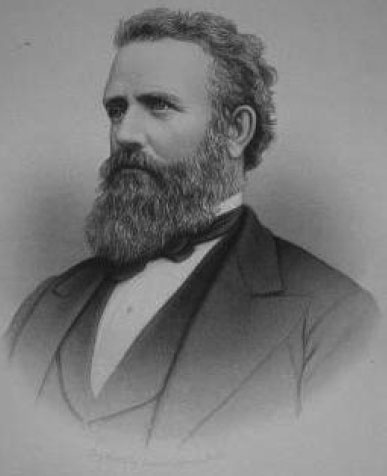
When the railroad finally reached Santa Barbara in 1877, Stearns added an additional spur to the wharf, and later in 1923 that was abandoned as it was no longer of use. A railroad logging car on the spur commemorates the wharf’s history. Passengers and commerce soon crowded the pier and Stearns replenished his lumberyard with wood taken directly from ships rather than floating the wood ashore on the tide. A boom in visitors to Santa Barbara began. Wealthy health seekers, boaters and sunbathers flocked to the beach. West Beach became the destination of choice as tourists followed the footsteps of Indians and settlers. Bath Street was named as such because it led to the public bathing beach.
Santa Barbara began a future in tourism in the 1880s as new money and wealthy settlers were attracted to the beauty and tranquility of Santa Barbara. Elsewhere, pioneers traveled to a new country to make their fortune, but in Southern California many came with their fortunes already made, and were motivated chiefly by a desire for a better place to live during their balance of life.
The first boom in Santa Barbara from this immigration took place during the 1870’s. Lots which had been held at $100 in 1870 brought $5000 four years later, the city’s population grew 17 per cent, and the famous Hotel Arlington was built. This hotel was like many others shortly to be built all over Southern California, for the patronage of wealthy winter visitors from the East, and was an elegant establishment for what was then a dusty frontier village. Each of its ninety rooms had a fireplace and a marble mantel, running water and gaslight, and the rooms connected with the office by a speaking tube. It was one of the first hotels in America to plan elaborate entertainment for its guests. This included such affairs as organized picnics, tally-ho excursions, flora and fauna expeditions, hunting trips and surf bathing parties. Hotel Arlington had been spoken of as a “rarely exotic freak of the landscape,” and Santa Barbara as developing an unusual social life which was neither eastern nor western, fashionable or rustic, but a combination of all.
With this sudden surge in population and construction, the face of Santa Barbara began to change. Victorian houses soon outnumbered Spanish Colonials. Shipping grew in prominence, as goods and people from the East began pouring in through the small, but growing, port. This begins a period of great experimentation. Agriculture becomes even more important as people realize that just about anything planted here grows.
It was against such a background that Magnolia Lodge No. 242 was organized and chartered in 1875. The population of the city had grown to 3200, and it was felt that a new Lodge was needed. Santa Barbara Lodge 192 had also become a little exclusive; among the charter members of Magnolia Lodge we do not find a single member of Santa Barbara Lodge 192.
On November 1st of 1875, twenty nine Master Masons assembled in the Lodge Room of Santa Barbara Lodge No. 192 on the third floor of the Odd Fellows Building at the southeast corner of State and Haley Street to discuss the feasibility and desirability of forming a new Lodge of Free and Accepted Masons. Those assembled favored the proposal and appointed a committee to procure a room where a new Lodge could hold meetings.
Rollin Dunshee, Worshipful Master of Santa Barbara Lodge, accepted the petition and requested that the Grand Master issue a dispensation for the formation of the new lodge. The new lodge was permitted use of Santa Barbara lodge’s room together with the furniture, jewels, aprons, working tools and other necessary paraphernalia for the holding of the meetings, rent free until July 1, 1876.
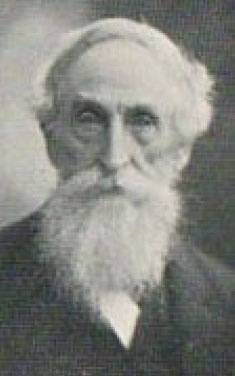
The recommendation given by Santa Barbara Lodge stated, among other things, “that the establishment of said new Lodge is of manifest propriety, and will conduce to the good of the order and that this Lodge recommends to the Grand Master the granting of the dispensation prayed for in said petition.” The Most Worshipful John M. Brown, Grand Master, acted favorably upon the petition, and on December 10, 1875, granted a dispensation.
The first meeting of Magnolia Lodge U.D. was held on December 17, 1875, with Brother Charles Jerome Paddock acting as Master. At this meeting a code of By-Laws in the usual form was submitted and approved. The first application for the affiliation in Magnolia Lodge U.D. was received from Brother Benjamin Franklin Thomas, a member of Guadalupe Lodge No. 237, on May 19, 1876, at which time Brother Thomas was elected.
At its Stated Meeting on September 15, 1876, Magnolia Lodge U.D. made request to the Grand Lodge for a Charter; and at the regular Communication October 12, 1876, Grand Lodge issued a Charter and Magnolia Lodge U.D. became Magnolia Lodge No. 242. The Most Worshipful John M. Brown, Grand Master, appointed the Right Worship Eugene Fawcett, Acting Grand Secretary and Past Master of Santa Barbara Lodge no. 192, to act on his behalf and read the Charter inscription in full to the new Lodge.
Charles J. Paddock was the first Master of Magnolia Lodge. Other Masters who are remembered for their outstanding terms were Addison H. Orr, in 1877 and 1878; Benjamin F. Thomas, in 1879 and 1890; William P. Butcher, one of the outstanding trial lawyers in California, who served as Master in 1893, 1895, and 1905 through 1908.
In addition to the wealthy class, there were many tourists who came to the city for reasons of health, and many old people came to spend their last days. Both Santa Barbara and Magnolia Lodge assumed a great burden in conducting the funeral of Masons from other jurisdictions, and on the minutes of Magnolia Lodge for September 21, 1877, we find the following: “Brother Charles J. Paddock, PM, presented and read a Resolution to be presented to the Grand Lodge at its next session asking permission to solicit from all Lodges in the United States outside of this jurisdiction, aid to the amount of $1.00 from each Lodge to establish a relief fund at the place.”
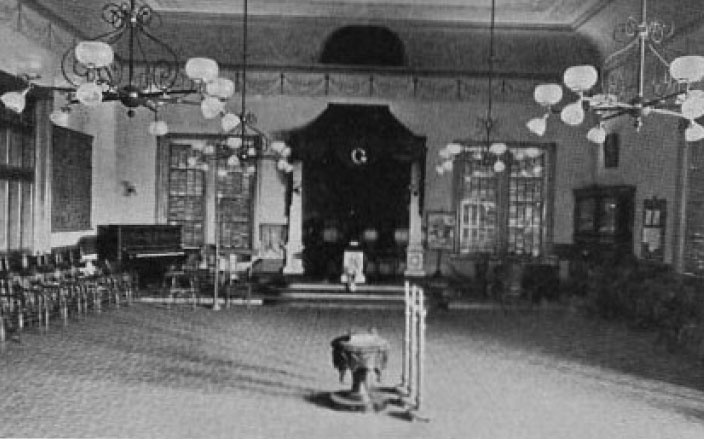
The city government was well represented in Magnolia Lodge. Perry C. Taylor was a member of the Police and Fire Commission. Norris Montgomery and Harvey Nielson had both served as Mayors of the city. Chesley Pinkham was Water Superintendent, and former Superintendents E.E. Brown and D.D. Smith were members. Past Master Charles L. Tenney was Chief of the Fire Department and the main city Fire Station on 121 W Carillo Street is named after him. Past Master Al Brotherton was Assistant Fire Chief, and Past Master Delmer W. May was Fire Inspector.
The two Lodges always got along famously and, in the late 1880’s were seriously considering a consolidation. However, due to the large increase in membership of both lodges, the consolidation was never actually consummated. It was around this time that the Lodges were moved to the Lower Clock Building, later known as the Park Building and known today as the Fithian Building on 629 State Street. It was one of the most complete Masonic Temples in California at the time. It boasted a nice game room with two billiard tables and a very large lodge room.
1900 – 1950
In 1918 a small group of masons got together on the Temple floor that was rented out in the old Fithian Building, and discussed ways and means of purchasing a lot and building our own Temple. At the time, Santa Barbara and Magnolia lodge membership exceeded 550 members.
Finally, in 1922 the newly formed Temple Association purchased the site of our present day Temple Building. They paid $20,500 for the lot. Plans for a Temple building were started on April 12, 1923, and on August 9, 1923, Santa Barbara and Magnolia Lodges held a meeting with Carl Werner, an architect from San Francisco. By 1924 our contract was awarded and the sum of $179,000 was paid for the erection of the building.
On July 24, 1924, the Grand Lodge Officers assembled and laid the Cornerstone in the North West corner under the direction of Deputy Grand Master, David Reese. He also installed the Officers of all five Lodges of the 67th district at the same time in one Lodge room. A native of Ventura, Worshipful Reese was instrumental in the forming of many of the other lodges in the Santa Barbara and Ventura areas.
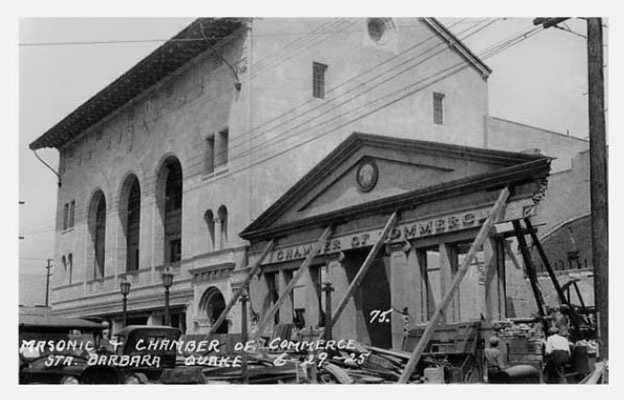
JIt is reported that while administering Masonic Relief and aid after the earthquake, David Reese, conceived the formation of La Cumbre Lodge. Led by William (Billy) Wallace McKee, a group of Masons from various other jurisdictions who were not affiliated with a Lodge within Santa Barbara, met on February 27, 1926 to discuss the formation of a third Lodge in the city. On May 31, 1926, La Cumbre Lodge, under dispensation, held its first meeting with a total of twenty five members. Over the years membership grew until in 1965 there were 290 members.
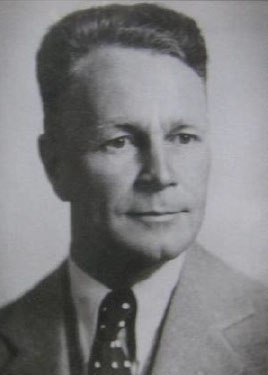
The unusual event of six brothers conferring the third degree on a seventh took place at La Cumbre Lodge one year, when the Erichsen brothers provided the candidate and performed the work. They were all born in Kewaunee, Wisconsin and were then members of various California lodges. The Senior Steward at the time was La Cumbre’s own Matt Erichsen, who some fifteen years prior was raised to the Sublime Degree of Master Mason in La Cumbre Lodge by the other five brothers.
Santa Barbara freemason, Dwight Murphy, is one of the fathers of the Santa Barbara Old Spanish Days Fiesta. The first parade was planned in 1924 by brother Murphy, who was a breeder of Palomino horses and had large ranch holdings in the San Marcos pass area. Murphy met with members of the De la Guerra and Ortega families to obtain information regarding the early Spanish customs.
In 1926 the group of merchants who had formed the first official “Old Spanish Days” committee and members of the parade committee met under the leadership of Dwight Murphy and established the present non-profit corporation of “Old Spanish Days Fiesta, Inc.” Murphy was elected president and thus became the first “Presidente.” Bro. Dwight Murphy was hailed as California’s Knight on a Golden Horse, Santa Barbara’s Renaissance Man. An architect and civic leader he was instrumental in promoting the Spanish architecture the city enjoys today.
Thomas Storke was one of the few prominent masonic voices opposed to the movement in Santa Barbara in the 1920s to unify the architectural style around a Spanish theme, although he later recanted, claiming that his original opposition was principally because such dictates interfered with the constitutional rights of property owners. His father Charles Albert Storke moved to Santa Barbara in 1871. He was a founding member of the Santa Barbara Shrine club. He served as Mayor from 1900 to 1902. He helped his son Thomas More Storke start the Santa Barbara News-Press, the oldest daily newspaper in Southern California.
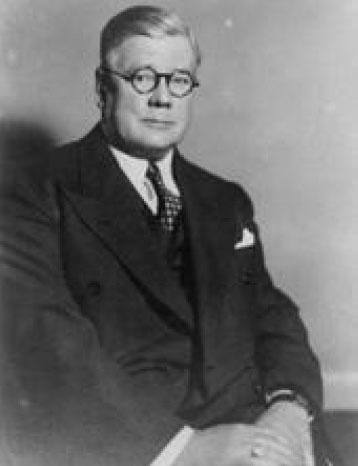
In 1932 the Santa Barbara Post became the Santa Barbara Press, which eventually became the Morning Press. Acquired by Thomas Storke and merged with his paper, the Santa Barbara News, it became the Santa Barbara News- Press. The Storke family ran the paper until 1964. Thomas Storke’s newspapers’ often helped promote Freemasonry in Santa Barbara.
Thomas Storke was also postmaster of Santa Barbara from 1914 to 1921. Storke’s contributions to the development of Santa Barbara include the establishment of the Santa Barbara Airport, the building of Lake Cachuma that supplies the area with water, and the upgrading of Santa Barbara State College to a University of California campus UCSB. Part of Storke’s lasting legacy is Storke Tower, a 190-foot structure in the center of the UCSB campus.
Santa Barbara freemason, Dr. William D. Sansum brought renown to Santa Barbara in 1922 as the first physician in the U.S. to administer life-saving insulin to patients with diabetes at the Potter clinic. He had tried for years to develop a compound which would duplicate the pancreatic secretions missing or deficient in the metabolism of the diabetic. The animal extract was named “insulin”, from the Latin for “island”, referring to the Islets of Langerhans. He established the Sansum Clinic at Cottage Hospital in 1928 and later founded his non profit organization, Sansum Diabetes Research Institute in 1944.
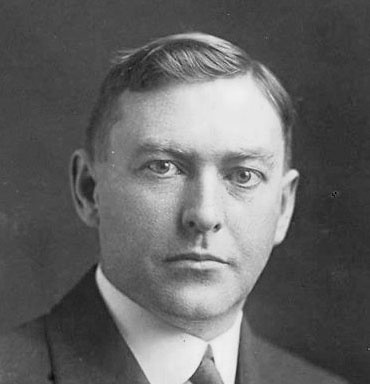
Dr. Sansum earned the nickname “Father Sansum”. He used to take diabetic children to matinee vaudeville performances on Saturdays and the cashier would say to the doorman “Here comes Father Sansum with all his children.” His patients used the name, and so did many of his colleagues. He was very active in the family of Masonic bodies in Santa Barbara.
1950-2000
In 1957 the Temple building mortgage was burned. The 100th Anniversary celebration of Santa Barbara Lodge in 1968 was supervised by Worshipful Master H. Francis Lewis.
One of the many philanthropic activities of the Santa Barbara lodge is the Child Identification program. Brothers volunteer their time fingerprinting and snapping photos of children of all ages. The identification sheet provided to parents also includes space to record height, weight, eye and hair color, and distinguishing marks. The identification sheet is extremely valuable to authorities if a child is ever missing or abducted.
One such place the lodge sets up a Child ID booth is at the annual fair at the Earl Warren Showgrounds. Most Worshipful Earl Warren was a California superstar who was born in LA, raised in Bakersfield, went to college and law school in Berkeley, and worked in San Francisco. He entered politics where he served 4 years as California District Attorney and 12 years as Governor. In 1948, he narrowly lost the election for vice president in the famous election where the Chicago Daily Tribune incorrectly printed a “Dewey Defeats Truman!” headline.
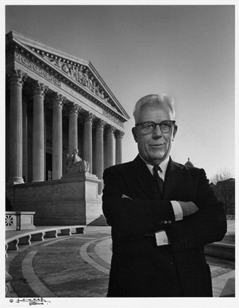
In 1953, he was appointed as the Chief Justice of the Supreme Court where he served until 1969, overseeing key rulings such as Miranda, and Brown vs. the Board of Education.
Arguably, one of the most influential rulings was made in the case of Brown vs. Board of Education. This unanimous decision by the court ruled that separate was not equal in the case of public education and sounded the end of racial segregation. Warren was a member of Sequoia Lodge #349 in Oakland, CA, and served as Grand Master of California from 1935 to 1936.
Among the famous masons to have lived in Santa Barbara was world renowned performer Burl Ives (1909-1995). Brother Ives was involved in Freemasonry as a youth, becoming a DeMolay in 1927. Then, after moving to California, he was initiated by Magnolia Lodge 242 (now Santa Barbara 192) in 1977. He later joined the Scottish Rite Bodies of Santa Barbara, California. In recognition of his many services to our Order, he was invested with the Rank of Knight Commander Court of Honor in 1985, coroneted an Inspector General Honorary in 1987, and elected a Grand Cross by The Supreme Council in 1993.
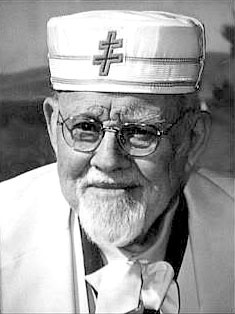
Brother Ives was famous for such folk songs as “Jimmy Crack Corn,” as well as for his lead role in the folk singing group “The Weavers,” Ives also starred on stage throughout the United States and in Europe, and in such major motion pictures as “Cat on a Hot Tin Roof” and “The Big Country” for which he won an Academy Award.
Dorothy Ives, following what she felt would have been the wish of her beloved husband, has had a Grand Cross emblem engraved on her husband’s monument. “He loved Freemasonry,” she said, “and I know this is what he would have wished.” In addition, Mrs. Ives has donated over 200 of the Masonic items collected by Bro. Ives throughout his long career.
By 1990 membership in La Cumbre had dwindled to 165 members most of whom no longer lived in the Santa Barbara area. Under the leadership of the Master George Hall, La Cumbre Lodge consolidated with Magnolia Lodge forming Magnolia-La Cumbre Lodge #242.
The 125th Anniversary celebration of Santa Barbara Lodge 192 in 1993 was helped by Worshipful Master James Thompson.
2000-Present
On January 7, 2006, Magnolia-La Cumbre Lodge 242 consolidated with Santa Barbara Lodge 192. Both lodges made the decision in 2005 to become one united lodge. Thus from the first Santa Barbara Lodge in 1868 the three original separate city Lodges eventually became one and voted to retain the very first name and number.
In addition to the Child ID program, the Santa Barbara lodge annually works a Rib booth at the Spanish Days Fiesta to raise money for Masonic youth charities. The lodge also takes care of a stretch of the 101 Highway in Goleta.
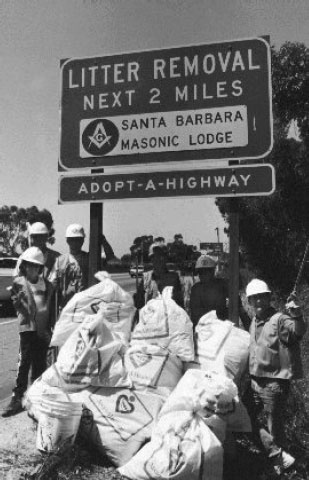
By 2005, the number of younger men seeking admittance to lodge had increased. More social gatherings were organized by this younger generation, which helped facilitate and support that increase. Lyon Zeibak & Sean McManus planned and organized these gathering for nearly three years and were helped by Daniel Rothman when he affiliated with the lodge.
In 2008, the lodge celebrated the 140th Anniversary of Santa Barbara Lodge with a Table Lodge complete with grand toasts and salutes. Worshipful James A. Burns presided as acting master and wore his colonial tri-cornered hat, the same hat he wore in 1976 when he served as master of La Cumbre Lodge. The Table Lodge was put on by Daniel Rothman, Sean McManus, Jonathan Clotworthy, Nathan Roller, Lyon Zeibak and many others.
The Table Lodge was an opportunity for the brethren to share Masonic fellowship in a less formal atmosphere with speeches, special rituals and group singing throughout the five course meal. It was so well received that two more are being planned with the goal of making it an annual event.
The 150th Anniversary celebration of the very first and only continuous and now consolidated Lodge in the city of Santa Barbara was held in the year 2018.
